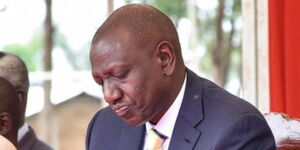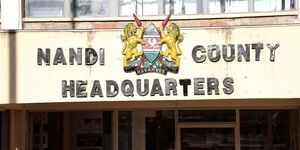Traffic jams in Kenya are being staged deliberately to further the agenda of the proposed nationwide tolling policy, the Motorist Association of Kenya (MAK) has claimed.
In a statement released on Thursday, August 28, the group alleged that a surge in traffic jams across major highways in Kenya was deliberate, urging Kenyans to reject the proposed plan.
The group accused the government of deserting its mandate to construct roads in the country and opting for private foreign investors instead. This, according to MAK, would result in double taxation as foreign investment would result in the implementation of a toll policy.
Further, they cited the road maintenance fuel levy, arguing that the funds from the tax were not being properly utilised to construct and maintain roads.
“Stop PPP toll roads! Say no to paying for highways that already belong to you. You already pay heavy fuel tax, and tolls will be double taxation. The government is abandoning its duty to expand roads with your taxes,” MAK said.
“Foreign companies will control Kenya’s most important highways. Traffic jams are being deliberately staged to force you into this scam. You, your children, and future generations will be captive to toll fees. Our highways are public. Not for sale. Not for toll,” it added.
Plan to Toll Highways Countrywide
In February 2025, Transport Cabinet Secretary Davis Chirchir announced a plan to toll the nation’s highways, inviting Kenyans to participate in public consultations, assuring that their opinions would be considered in the final decision.
The proposal, housed under the Draft Tolling Policy, aims to introduce toll charges on all highways nationwide as part of a broader strategy to bridge infrastructure budget shortfalls.
In the policy, the Ministry explained that the tolling system was already being implemented successfully on the Nairobi Expressway; therefore, the a need to undertake similar projects under the Public-Private Partnership.
Unlike previous tolling models, there would be no toll-free alternative routes, meaning all users will be required to pay.
Initially, in August 2024, the Kenya National Highways Authority (KeNHA) proposed tolling only select major highways.
Can Traffic Jams be Staged?
As past cases have shown, it is actually possible to stage traffic jams. These fabricated jams can affect both the flow of vehicles in the real world and digital traffic reports on navigation apps.
The methods include ‘phantom’ jams, which can be triggered by a single vehicle. In heavy traffic, an intentional, sudden, and unnecessary brake tap can create a "ripple effect". The driver behind them brakes harder, and the next driver brakes even more severely. This cascading reaction can cause traffic to slow and stop for a period, even though the source of the slowdown quickly sped away.
Traffic signal manipulation is another method where physical obstructions are used to stage a minor accident, and strategic parking.
On digital traffic reports, the case of a Berlin-based artist in Germany used 99 smartphones in a wagon to create a fake traffic jam on Google Maps, causing the app to reroute drivers is a classic example.












